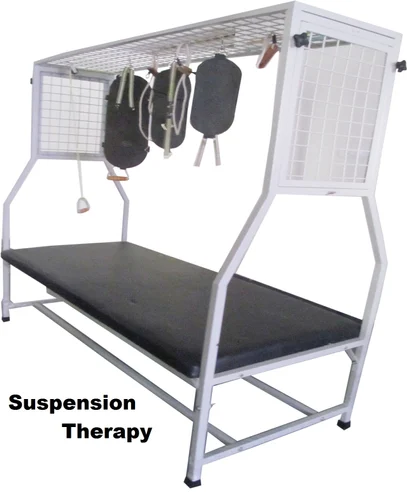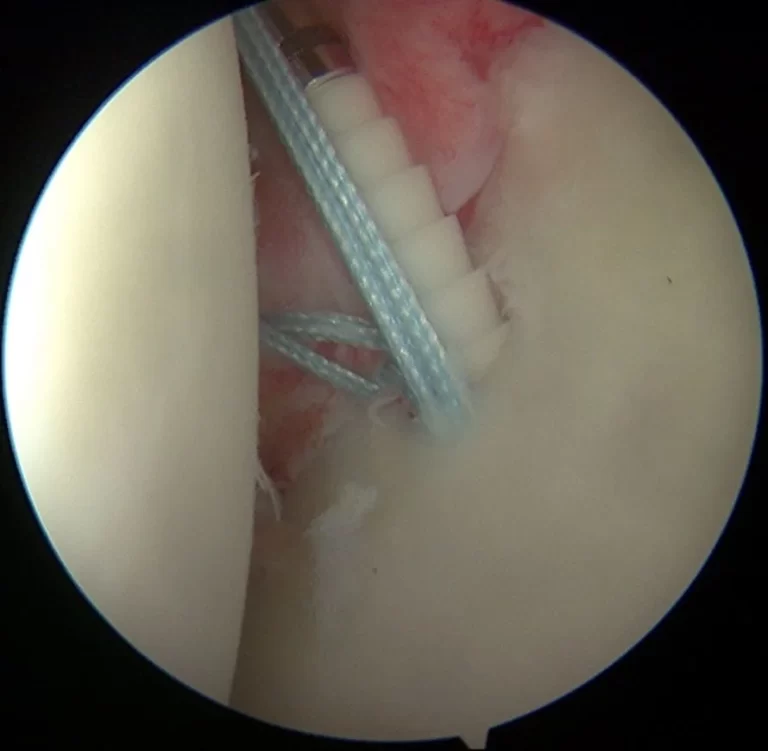Melodic Intonation Therapy (MIT)
Melodic Intonation Therapy (MIT) is a speech therapy technique designed to help individuals with aphasia, particularly those with non-fluent (Broca’s) aphasia, regain their ability to speak. It uses the musical elements of speech, such as melody, rhythm, and stress, to engage the right hemisphere of the brain, which can support language recovery when the left hemisphere is damaged.
This therapy uses the function of the right hemisphere in pitch, tempo, and stress modulation to improve verbal expression in people who suffer from impairment to the left hemisphere language centers.
During melodic intonation therapy, just 2-4 notes of sound should be utilized, with the beat of each note mirroring natural prosody patterns. In this case, defined syllables will be repeated with a higher pitch. When first using this therapeutic strategy, stimuli should not exceed four syllables and then gradually increase to phrases of five or more syllables.
Possible candidates:
- Someone with little verbal output.
- Poor speech repetition.
- Adequate speech comprehension.
- Emotionally stable,
- Excellent attention span.
- Unilateral stroke in the left frontal lobe.
Table of Contents
Melodic Intonation Therapy Goals:
- The primary goal of MIT is to promote speech activity and language restoration by engaging the brain’s musical processing centers and using melodic patterns and rhythms that encourage speaking growth..
- MIT seeks to restore propositional speech.
- Patients are finally expected to talk permanently in this fashion while avoiding overt singing.
Principles of Melodic Intonation Therapy (MIT)
- The therapeutic tool of repetition is highly effective. It has been recognized as the essential structure of MIT.
- As you go through the therapeutic hierarchy, the activities get more difficult and take longer.
- Direct steps are taken to fix the errors.
- There is a delay between the doctor concluding the stimulus presentation and the aphasic patient responding.
- The use of textual or visual materials as extra stimulation is not recommended.
- Aphasics with significant language impairment need at least two sessions each day.
- Using the same information or carrier phrases repeatedly helps to reduce the practice effect.
- Suitable reinforcement that should not cause damage.
Melodic Intonation Therapy Steps
Position of Seating: The clinician holds the aphasic patient’s left hand while tapping out the stimulus’s rhythm as the patient sits across from them.
Melodic Intonation Therapy (MIT) is a set of techniques designed to help patients with non-fluent aphasia improve their speech output. The basic MIT Levels and Steps are as follows:
- Level 1: One Step
- Level 2: Four steps
- Level 3: Three steps
- Level 4: Four steps
Level 1: One Step
Step 1
- The therapist taps out a simple tune twice to start the therapeutic session.
- The patient responds by repeating the same tune twice in time with the doctor.
- During this phase, the physician progressively moves away and lessens their involvement.
Score and Development:
- Building on this core practice, the therapist moves on to the next melody. At this point, no scoring is required.
Level 1: Four-Step
Step 1
- The therapist taps out a simple tune twice to start the therapeutic session.
- The patient responds by repeating the same tune twice in time with the doctor.
- During this phase, the physician progressively moves away and lessens their involvement.
Score and Development:
- Building on this core practice, the therapist moves on to the next melody. At this point, no scoring is required.
Level 2: Four Steps
Step 1
- The therapist begins the technique by picking a sentence and pronouncing it with the proper intonation and melody.
- The therapist directs the patient to cooperate with the music.
- The patient and the clinician intone the chosen statement in tandem.
Progress and Scoring:
- A step is taken as successful, receiving one point, and moving on to step two if the patient’s intonation is appropriate and resembles the tune played by the therapist.
- The progression for the current sentence ends if the patient’s intonation is unacceptable or fails to complement the tune.
Step Two
- Equipped with knowledge and compassion, the clinician starts this phase by intoning the same words while humming a song.
- The clinician directs the patient to participate in the procedure itself.
- The client and healthcare provider intone their statements lyrically and in perfect tune.
- The physician progressively steps back as the patient becomes more comfortable and skilled, letting the patient lead this musical conversation.
Progress and Scoring:
- A step is considered successful, receiving one point, and moving on to step three if the patient’s intonation is appropriate and complements the tune played by the therapist.
- The progression for the current sentence ends if the patient’s intonation is unsatisfactory or fails to complement the tune.
Step Three
- When it’s time to start the exercise, the physician taps the patient’s hand to start the step.
- The doctor tells the patient to assist in intoning the same sentence after the music.
- To produce the melodic and rhythmic pattern, the patient and the physician intone the statement simultaneously.
- The physician sets the tone for the session as he leads the patient through the exercises.
- The physician might offer a hint or extra assistance to help keep the flow going if the patient is having trouble or is hesitating.
Progress and Scoring:
- The patient receives two points if they can successfully intonate the statement without the help of a signal, indicating that they are prepared to move on to Step 4 with the same sentence.
- The patient gets one point if they intonate the statement but need the clinician’s help or signal. They keep utilizing the same sentence as they move on to Step 4.
- The progression for that single sentence is paused, and further practice may be required if the patient cannot intone the sentence, continue the melodic and rhythmical pattern, or finds the task too difficult.
Step Four
- To begin, the clinician intones, “What did you say?”
- The patient is then provided a signal from a therapist.
- The sufferer repeats the sentence.
- The clinician intones a signal if the client happens to need it.
Progress and Scoring:
- Give the patient two points if they accurately repeat the sentence without assistance.
- Give the patient one point and move on to step 1 for the following sentence if they accurately repeat the sentence, but need an indication.
Level 3: Three steps.
Step 1:
- The physician begins by intoning a phrase.
- The medical professional encourages the patient to participate in.
- The therapist and patient intone the phrases in concert.
- The doctor continually fades out, leaving the patient to take the initiative.
Score and Progress:
- If the intonation is suitable (1 point), go to step 2 within the same sentence.
- If the intonation is not enough, halt moving forward of that sentence.
Stage 2:
- The therapist should reiterate the remark from the previous step.
- Following the pronouncement, the doctor should tell the patient to be patient.
- After a little quiet time, the clinician should advise the patient to proceed.
- After the signal, the individual in need must repeat the intoned statement.
- If the patient is unable to repeat the sentence correctly or smoothly following the backup in step 2, return to level 3, step 1.
Score and Progress:
- If the patient can repeat the intoned statement properly and smoothly without assistance, 2 points will be awarded. In this case, go to step 3 with the same statement.
- If the patient needs to go back to step 2 but can repeat the statement correctly and smoothly, give them one point and move on to step 3.
- If the patient cannot repeat the statement correctly or smoothly, even with backup from step 2, stop progressing with that sentence.
Step 3
- The doctor mirrors his handling of the patient’s questions.
- The healthcare professional gives indications that encourage the patient to react.
- The patient acts appropriately, either intoned or spoken.
- If the patient fails Step three, they should come back to Step 2.
Scoring and Advancement:
- If the patient provides an adequate response in Step 3 without needing backup, award two points.
- If the patient requires backup but ultimately provides appropriate feedback, award 1 point. Following that, you may move on to Step 1 for the following statement, which indicates progress in therapy.
level 4: Four Steps
step 1
- The physician slaps their hand to attract the patient’s attention. The clinician sings the target sentence with a melodic and rhythmic intonation.
- After singing the sentence, the therapist asks the patient to remain calm.
- The therapist sings a specific phrase twice, using a technique called “Sprechgesang,” which mixes speaking and singing with a musical element.
- The healthcare professional encourages the patient to be involved.
- The Sprechgesang approach allows both the physician and the patient to sing the statement in harmony.
- If the patient has trouble, the doctor can assist by repeating the statement in Sprechgesang.
- Then the physician and the client try to sing the sentence together again.
Score and Progression:
- If the patient can sing the statement correctly without needing support, they develop 2 points, and the therapy moves on to Step 2 with the same sentence.
- If the patient needs help but finally sings the phrase correctly, they receive one point, and the therapy moves on to Step two, when a new sentence is introduced.
- If the patient cannot sing the sentence properly, even with assistance, the process for that sentence is stopped.
step 2
- The doctor begins by providing the same line using a method known as “sprechgesang.”
- After providing the sentence in Sprechgesang, the physician instructs the patient to wait.
- This delay normally lasts 2-3 seconds. At this phase, the patient should be prepared to respond.
- Following the clinician’s rhythmic and melodic intonation approach, the patient repeats the statement in sprechgesang.
- If the patient cannot properly repeat the statement, you should return to Step 1 and try again before continuing.
Scoring and Progression:
- If the patient correctly repeats the statement in sprechgesang without needing any type of help, they receive 2 points and move on to stage 3.
- If the patient’s answer is undesirable, the progression of that sentence should be stopped.
step 3
- No hand tapping is necessary.
- The therapist begins by repeating the example sentence twice, using proper rhyme.
- After providing the statement, the physician instructs the patient to wait 2 to 3 seconds before repeating it.
- The patient then repeats the statement using typical speech prosody.
- If the patient is unable to accurately repeat the statement, the physician will give a backup presentation in regular speech prosody.
- Following the clinician’s backup presentation, the patient is given another opportunity to repeat the statement using regular speech prosody.
Scoring and Progression:
- If the patient correctly repeats the statement without using another presentation, they will earn two points. The treatment moves on to stage 4 using the same sentence.
- If the patient requires a backup presentation to accurately repeat the statement, they will get one point. The therapy progresses to stage four, with an additional statement.
- If the patient is unable to repeat the statement accurately, even after the backup presentation, the process for that sentence is halted.
step 4
- The therapist questions the patient about the meaning of the same sentence.
- The patient’s response should be relevant and meaningful to the clinician’s query.
- If the patient’s reaction is unacceptable or lacks significant content, the physician should return to Step 3 of the therapy.
- Following the backup step, the doctor may repeat Step 4, asking the same or equivalent inquiries to assess the patient’s development and whether they can now make a substantial response.
- The physician can next ask questions about the associative knowledge associated with the sentence.
- The patient’s response should be relevant and meaningful to the clinician’s query.
Scoring and Progress:
- If the patient delivers a significant response without the need for a backup to Step 3, they will receive 2 points.
- If the patient’s outcome improves after the backup to Step 3, they receive 1 point.
- If the patient answers one or more questions concerning associative information, they will get three additional points.
- After evaluating the patient’s performance in Step 4 and any related questions, the therapist can go on to the next phase, extending the therapy process to enhance the patient’s communication abilities through melodic intonation therapy.
Melodic Intonation Therapy video
Summary of Melodic Intonation Therapy Steps
- While hearing the clinician’s hummed and intoned words, the patient taps out the beat.
- The patient and doctor communicate simultaneously.
- Clinical production ends with the clinician.
- The patient independently reproduces the clinician’s intoned utterance model.
- The patient no longer intones his or her response; instead, it comes out in coordination with strong intonation before gradually dissolving into more conventional speech prosody.
- Clinical production ends with the clinician.
- The patient communicates in a way that is independent of the therapist.
- When the therapist asks a question, the client stops copying them and begins to talk for himself or herself.
A more thorough summary of MIT’s activities may be found here:
- Inner Rehearsal: The therapist vibrates the melody and taps gently as the client listens, simulating the act of “hearing” the phrase repeated inwardly. This helps the client establish a hearing “target” to compare against their spoken output.
- Humming and Singing: The healthcare professional taps the patient’s palm while humming the desired phrase. The therapist then asks the client to join in on the humming and singing of the sentence. The therapist encourages the client to take up the song by progressively reducing their vocalization while still tapping.
- Repetition and Fading: The therapist taps the words while singing them, then uses hand tapping to indicate that the client should repeat them on their own. The therapist can offer a phonemic cue if the client finds it difficult to start the statement.
- Answering Questions: The therapist presents a question on the sentence after the client can repeat it. The therapist can assist with tapping if necessary, and the client reacts by singing the line independently.
- Moving on to More Complicated Phrases: The therapist presents larger and more complicated sentences as the client develops skills with basic phrases. Eventually, the client should be able to use spoken language to communicate successfully with little to no musical assistance.
Apraxia Treatment with Melodic Intonation
To improve communication efficacy, you will start with practical everyday words related to aphasia and apraxia of language. Scroll down to see a list of MIT phrases.
MIT learners who have apraxia will start out focusing on functional communication, such as using phrases like “help” or “thank you.” Your attention may shift to intelligibility as patients get better, incorporating increasingly challenging phrases with lots of syllables.
Therapy for Aphasia via Melodic Intonation
The initial phase in MIT for aphasia is to improve functional communication and verbal output. The primary aim is for your client to be capable to communicate and produce something.
You can shift the emphasis to lengthening sentences with a range of phrases and sentences as they improve.
FAQ
What is melodic intonation therapy?
MIT wants to bring propositional speech back. The idea is that, via singing, patients can use language-capable areas of the right cerebral hemisphere to learn a new style of speaking. Patients are expected to communicate in this manner going forward, but not to sing directly.
What is melody in intonation?
Language melody is referred to as intonation. Rising-falling, falling-rising, and falling intonation are the three most prevalent intonation patterns. Grammar and meaning are directly related to intonation.
What are the steps in melodic intonation therapy?
People with apraxia (difficulty moving the mouth or tongue to talk or form words) can also benefit from MIT therapy, even though it is mainly used for those with severe non-fluent aphasia. The five primary steps of melodic intonation are vibrating, intoning together, decreasing repetition, and responding.
What are the benefits of melodic intonation therapy?
Speech with a shortened and exaggerated pronunciation, which is characterized by a melodic component (two high and low notes) and a rhythmic component (two long and short durations), is typical for melodic intonation therapy. It has been demonstrated that using this method helps people remember more words.
What are the goals of melodic intonation therapy?
Melodic Intonation Therapy (MIT) is an evidence-based treatment approach that helps aphasics with expressive language by using intonation, or singing. By focusing on language-capable regions, the method makes use of the intact right hemisphere.
References
- SLP TREATMENT – Melodic Intonation Therapy. (n.d.). https://sites.google.com/csumb.edu/slp-treatment-activities/communications-modalities-adult/melodic-intonation-therapy
- BASLP COURSE. (2024, August 7). Melodic Intonation Therapy (MIT): goal | steps | phrases. https://baslpcourse.com/melodic-intonation-therapy-mit-goal-steps-phrases/
- Therapy, A. S. (2024, May 7). Melodic Intonation Therapy For Aphasia & Apraxia In 8 Easy Steps. ADULT SPEECH THERAPY. https://theadultspeechtherapyworkbook.com/melodic-intonation-therapy-for-aphasia-2/







